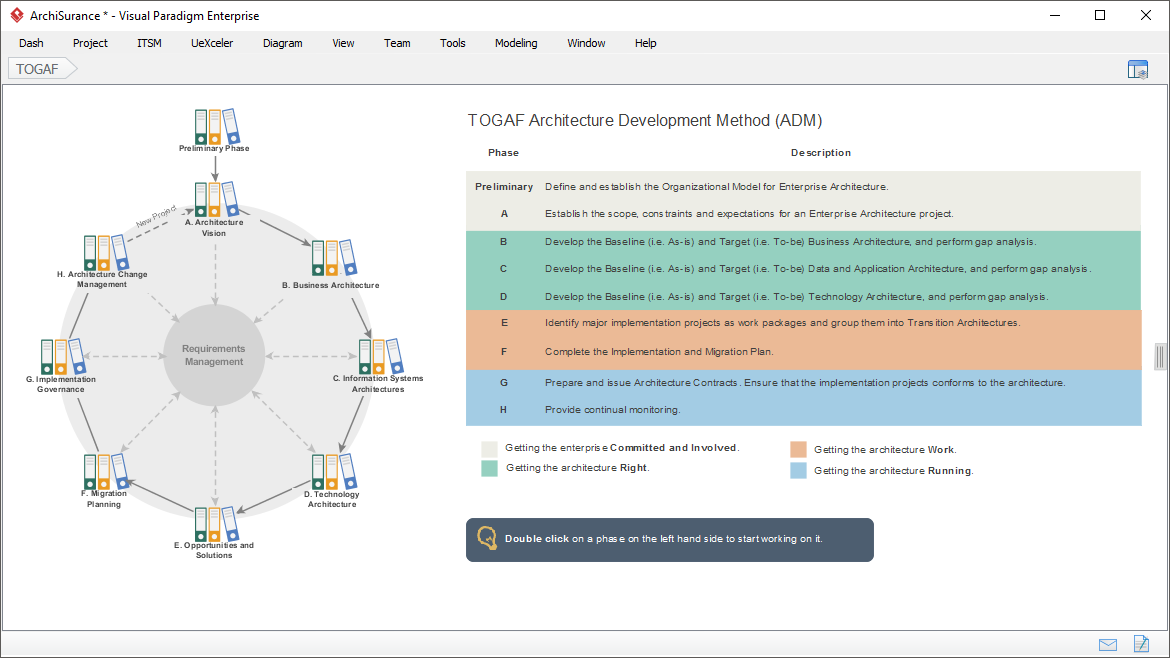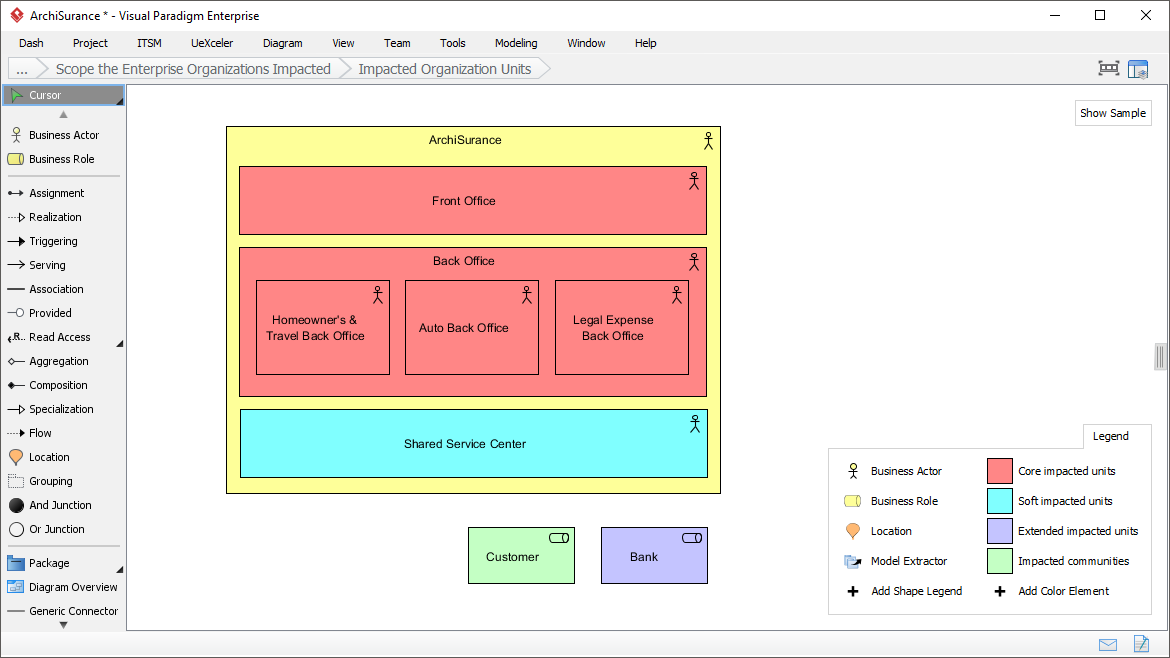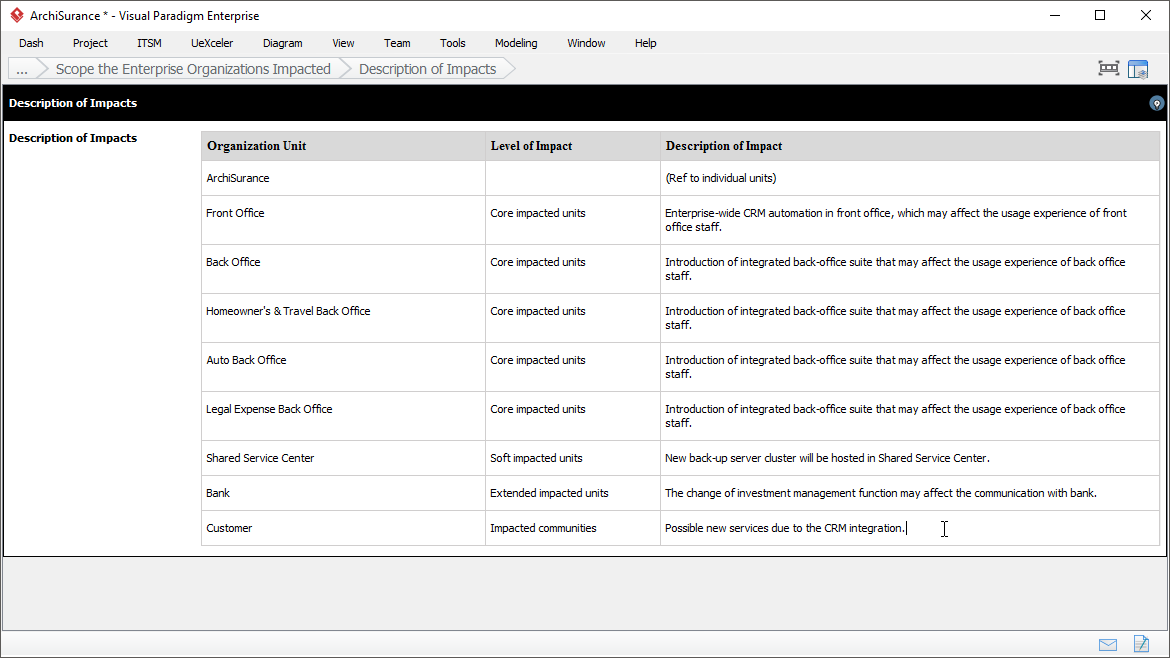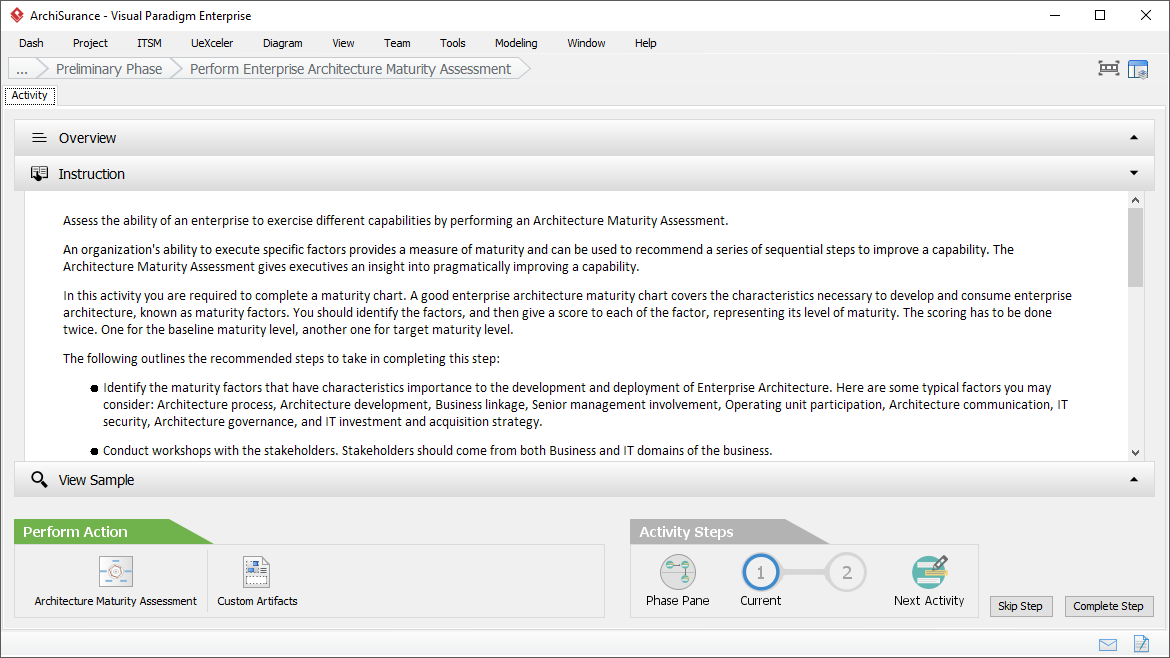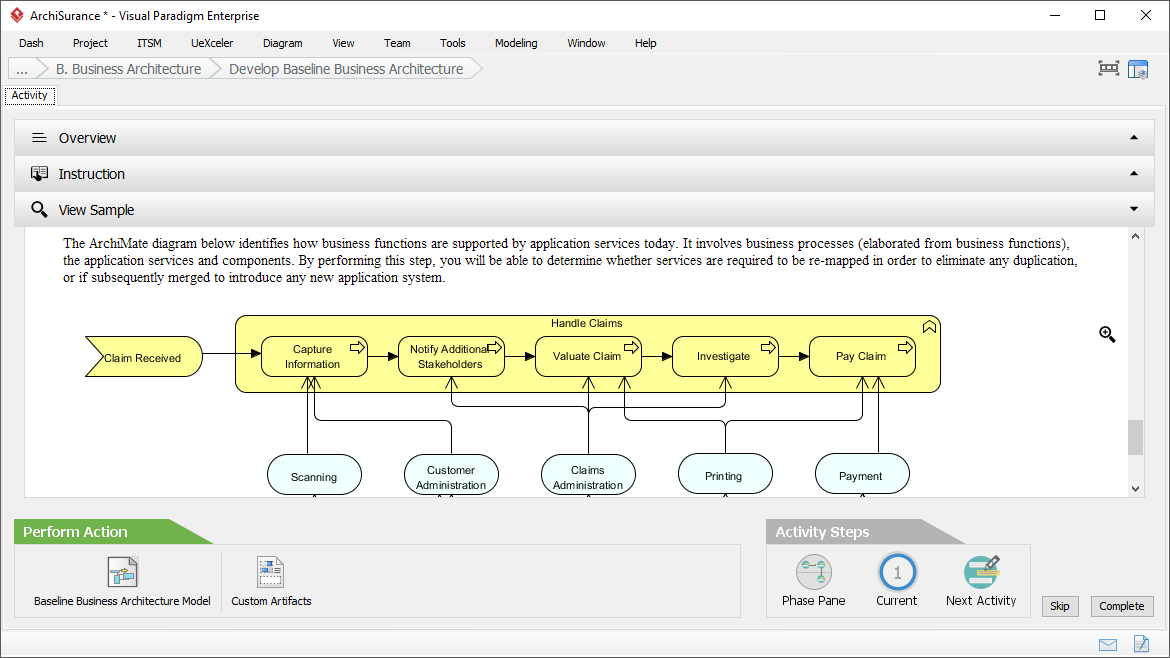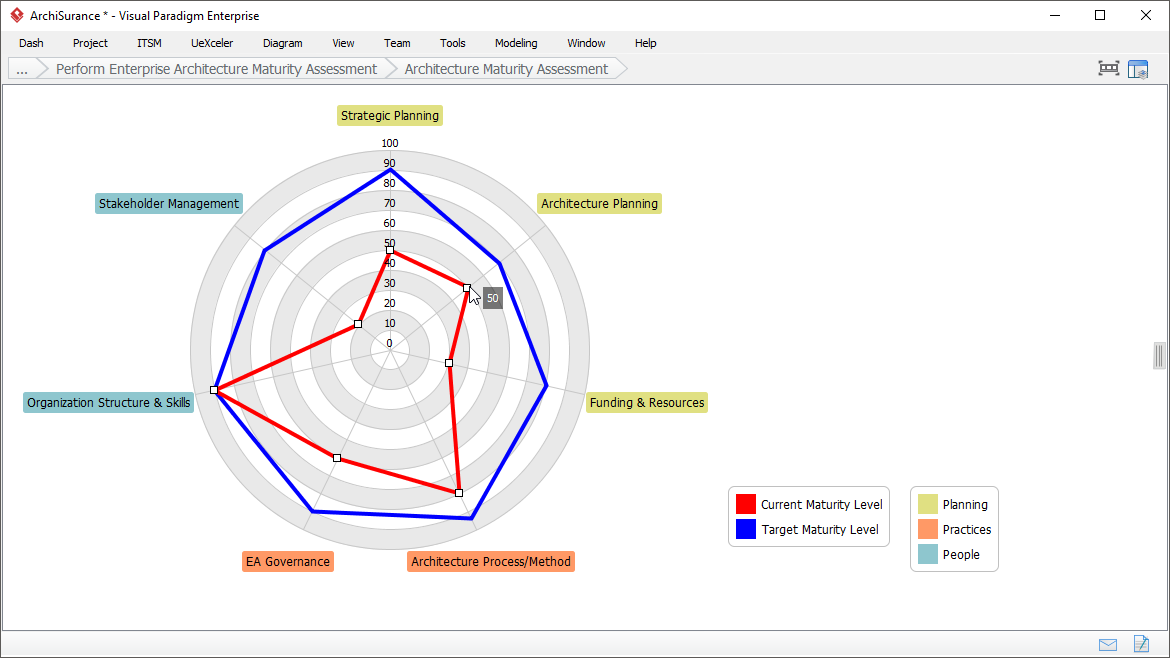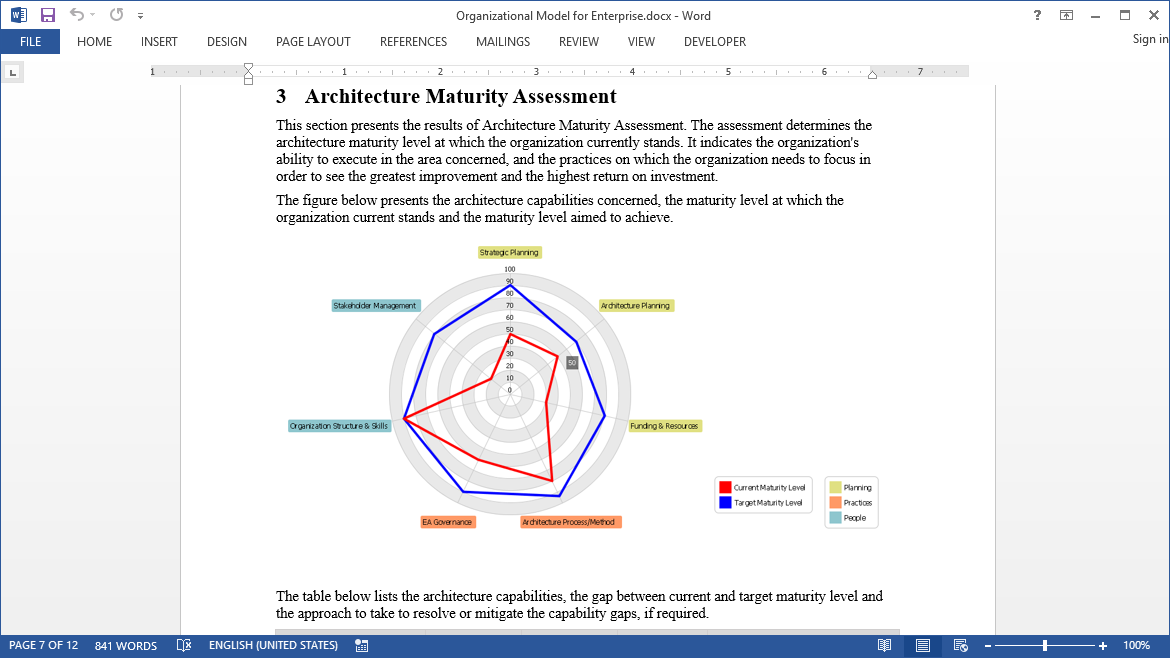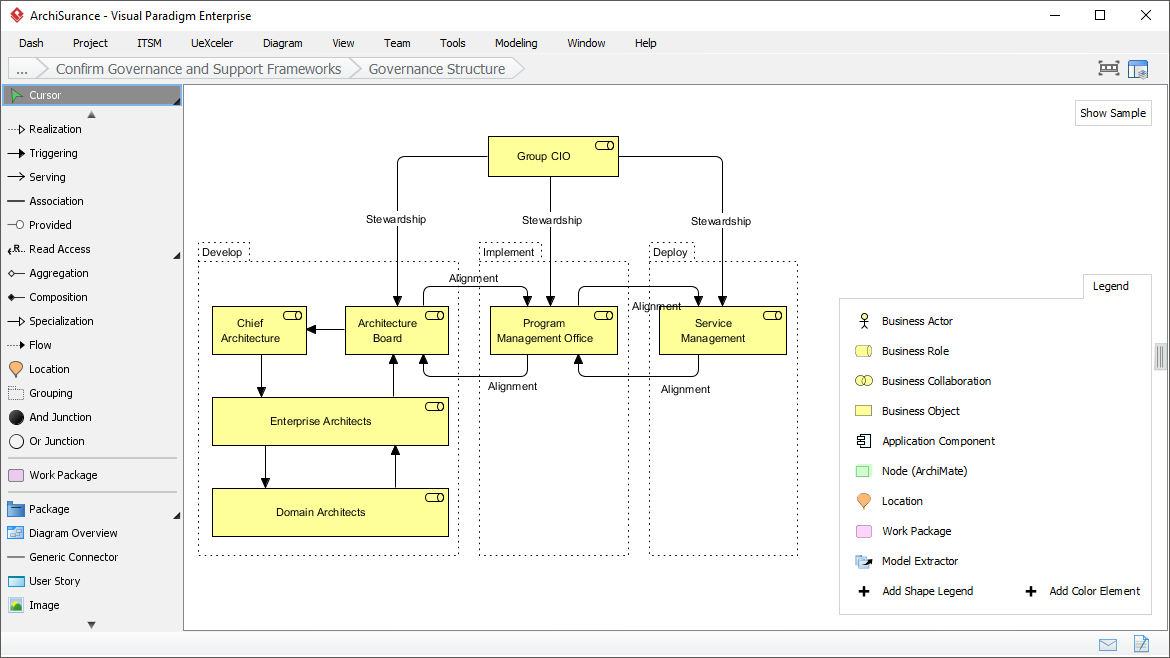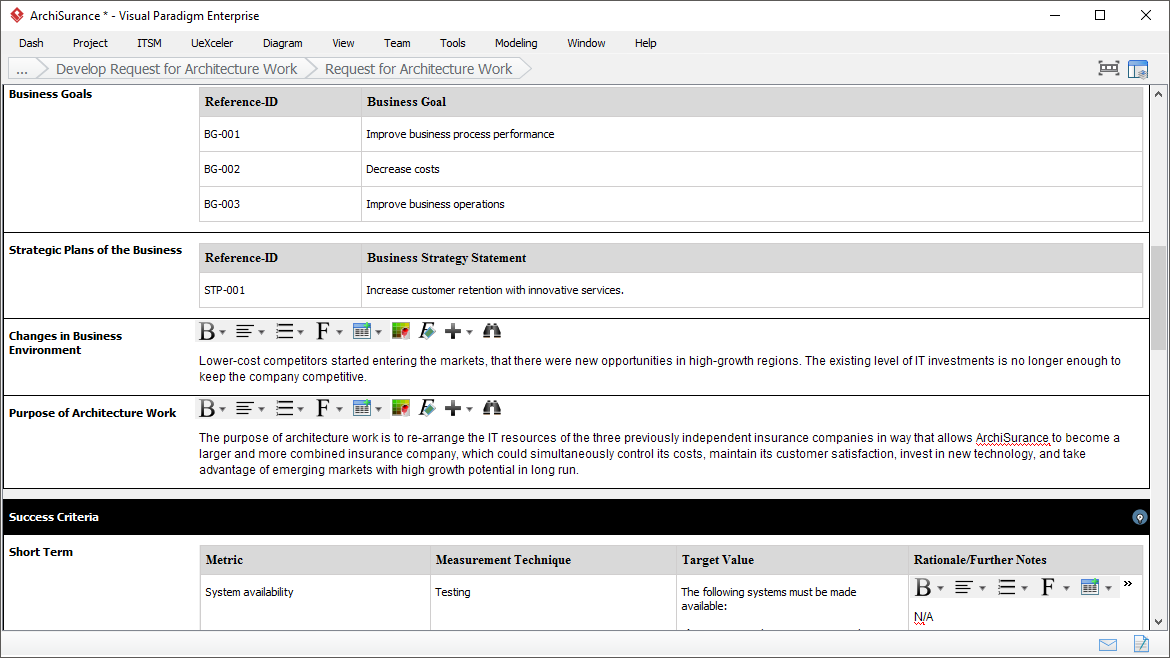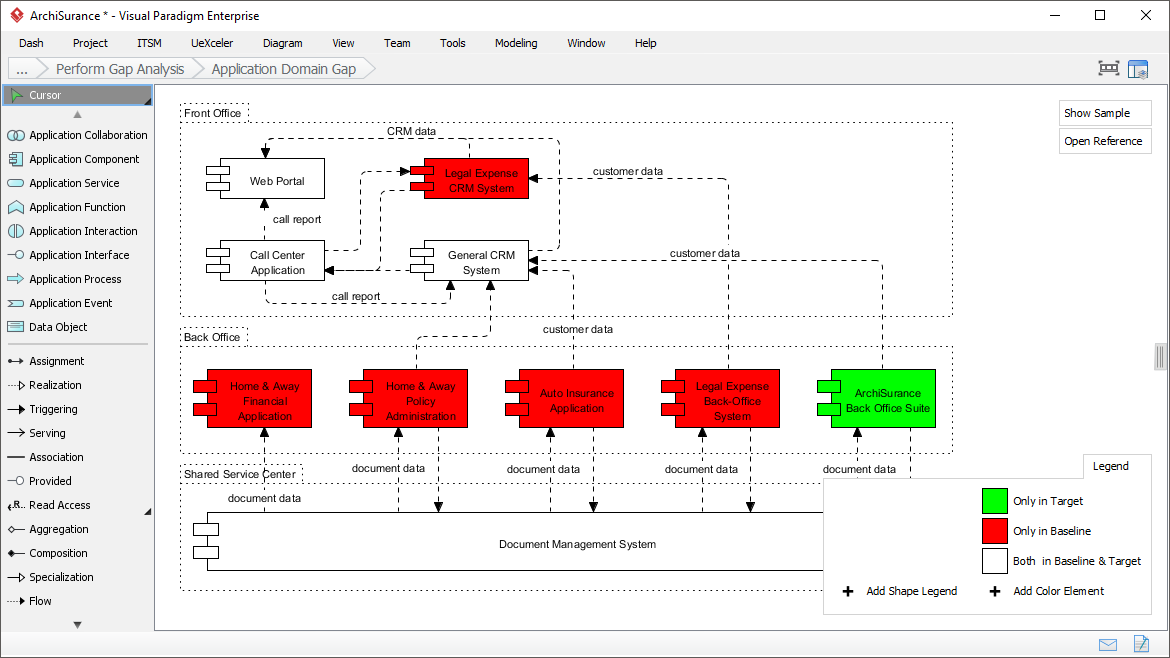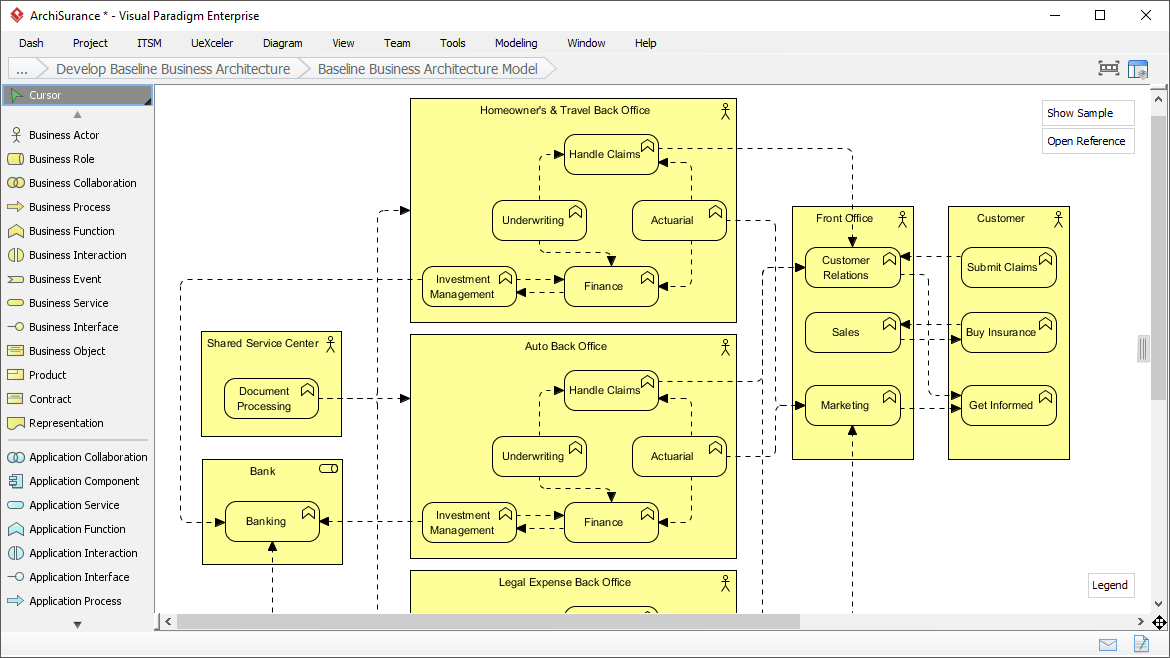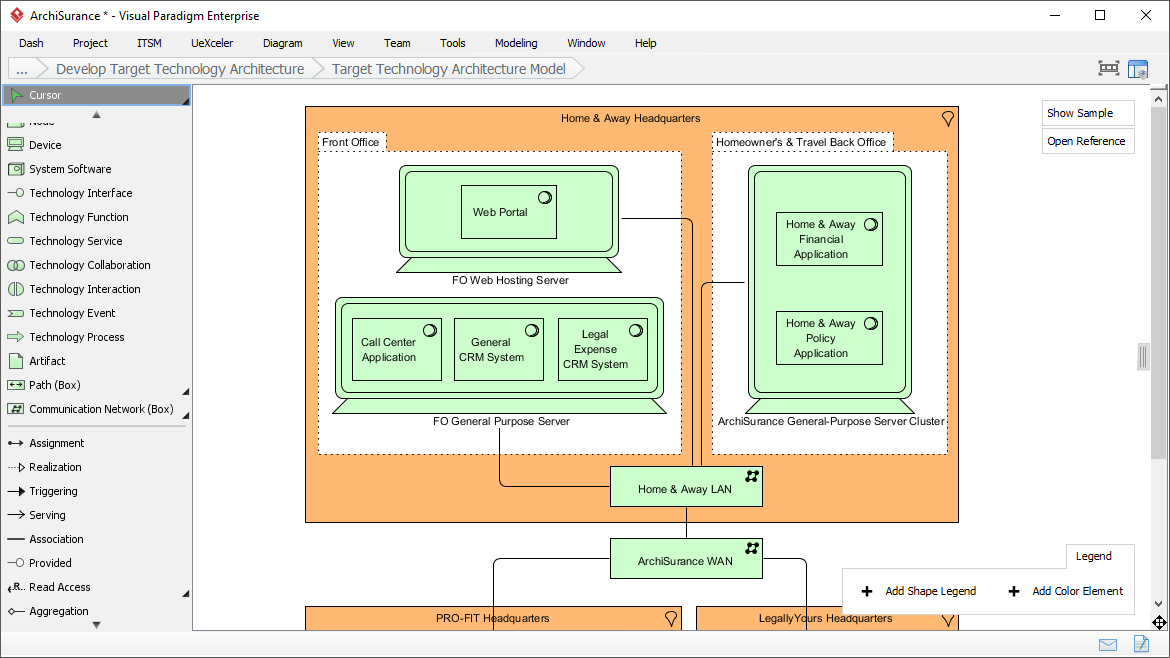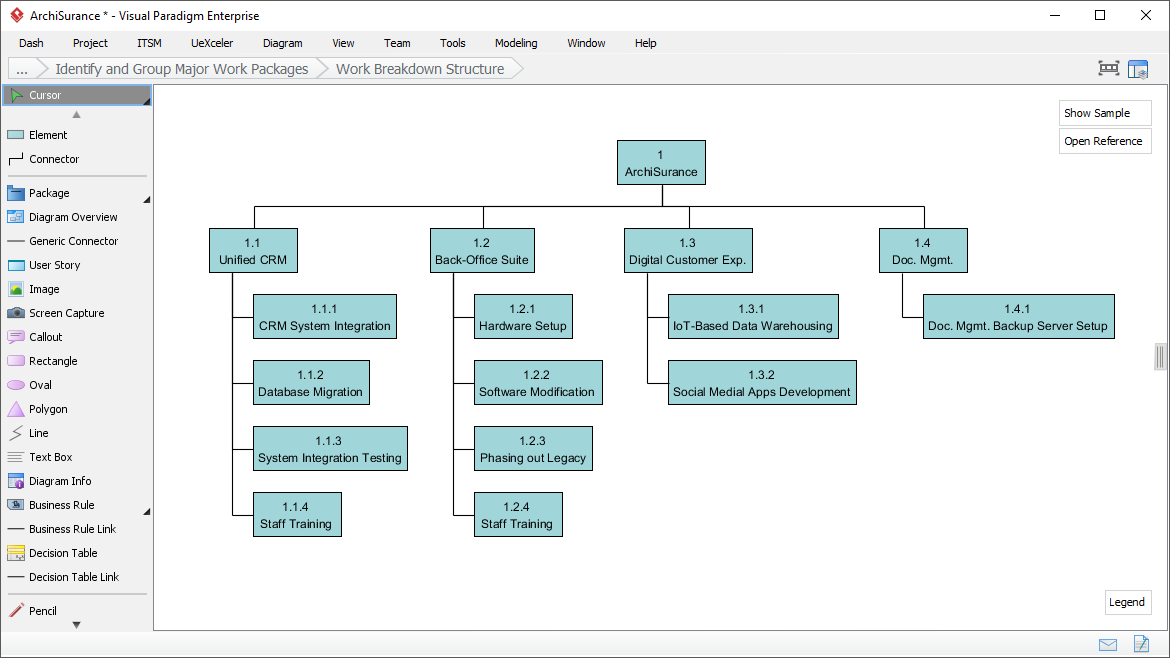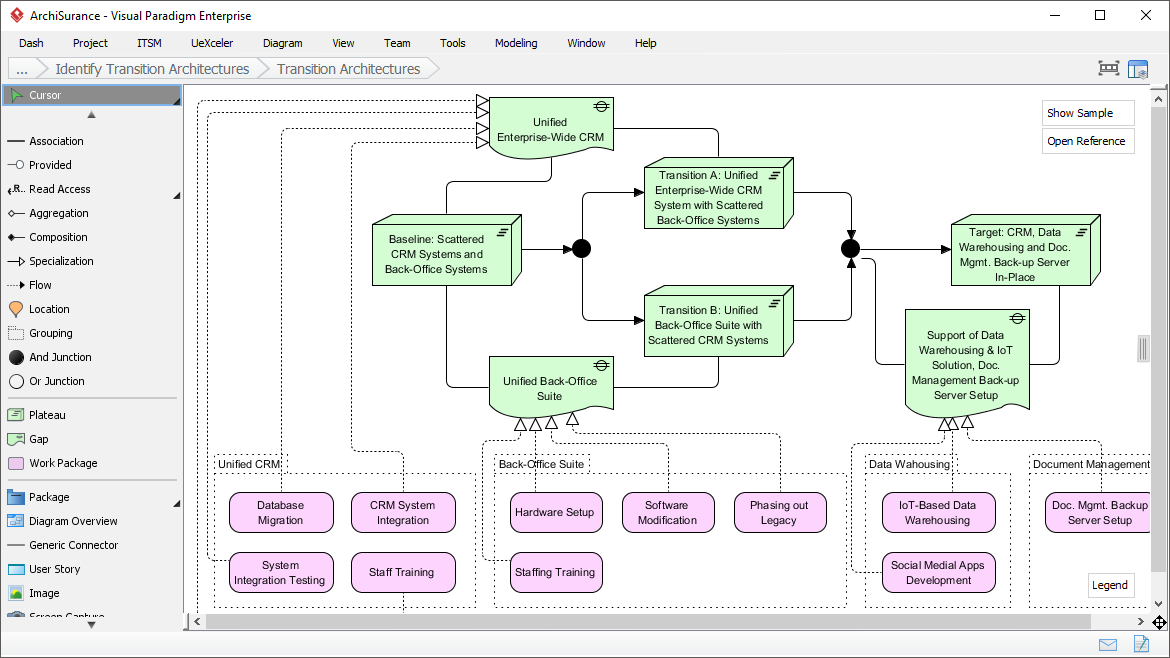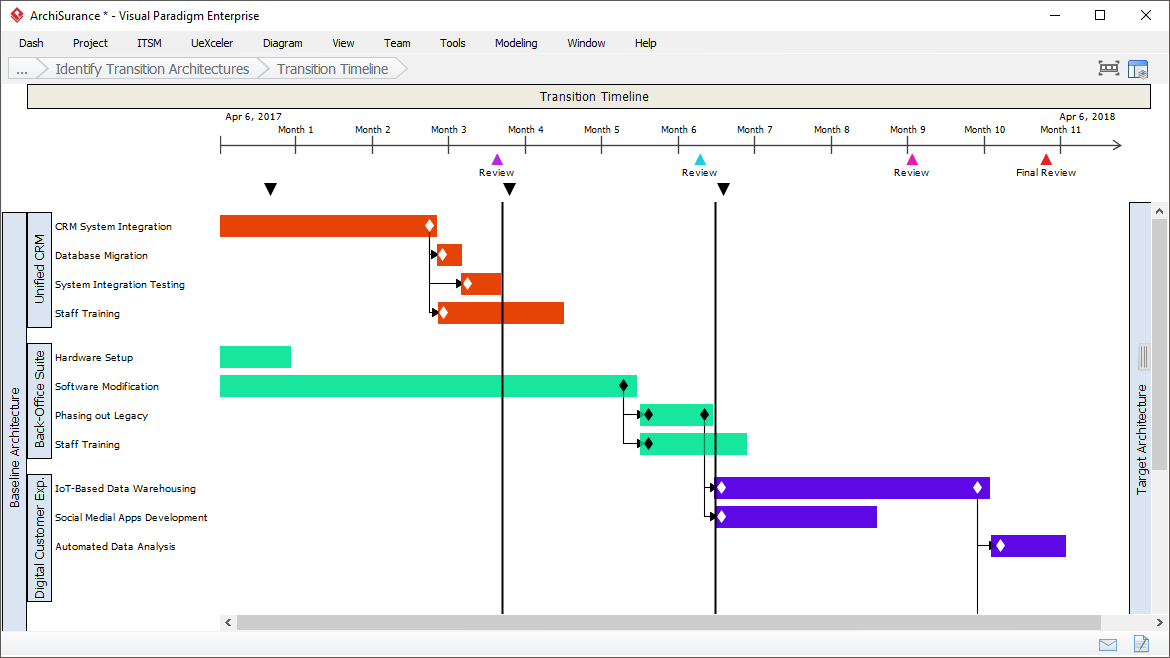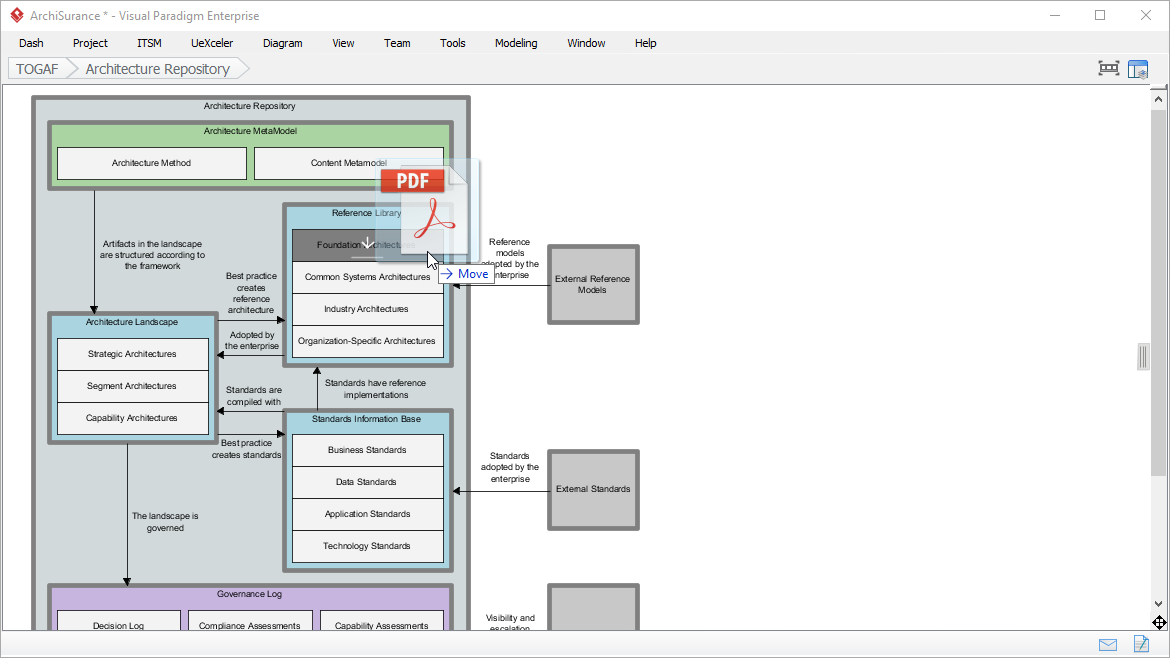What is Enterprise Architecture?
Enterprise Architecture is a means to transform fragmented applications and processes (both manual and automated) into an integrated environment, which result in optimized processes that can respond to change and the accomplishment of business strategies. Unmanaged complexity in IT landscape leads to greater cost and less flexibility. Typical issues include lack of standards, redundant applications, multiple platforms, and inconsistent data. All these hinder an organization's ability to respond to business and economic changing environment.
TOGAF Framework
TOGAF® is a framework for Enterprise Architecture. It defines the Architecture Development Method (ADM) and supporting tools to address complexities, so that organizations can define the way to operate their businesses and design the processes and infrastructure critical to their current and future operations (enterprise architecture), which guides the evolution of their foundation for execution.
The ADM cycle describes an incremental and iterative method for designing Business, Data, Applications, and Technology architectures. It progresses from high-level concept diagrams, to detailed domain architectures, all the way to the development of solution architectures, architecture roadmaps and implementation plans.

ArchiMate vs TOGAF ADM
TOGAF describes the process of developing and managing an enterprise architecture, but it doesn't contain a defined modeling language structure. The TOGAF framework and the ArchiMate 3 modeling language is a powerful combination. ArchiMate 3 is meant to be complimentary to the TOGAF content framework and architecture development process. It can be used to describe all aspects of the EA in a coherent way. Deliverables in the architecture process are more effective when based on an approach that combines formal models with powerful visualization capabilities.
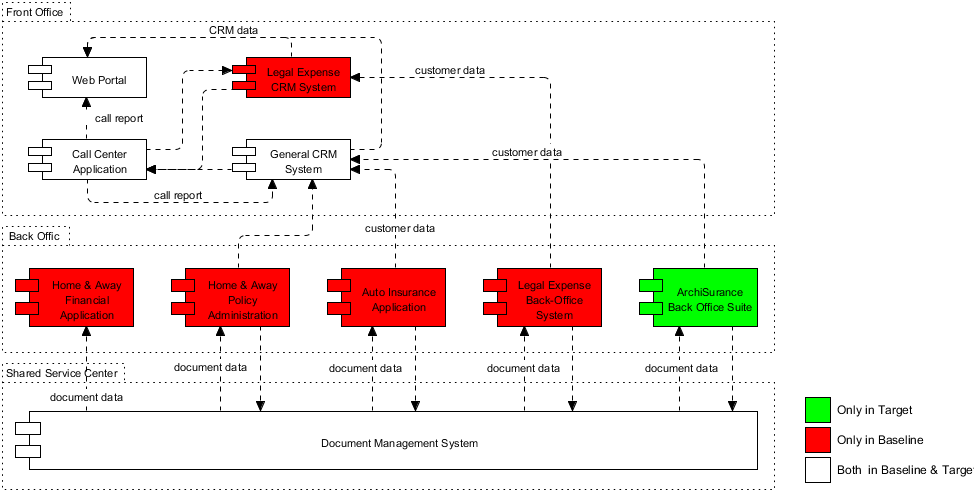
Why TOGAF Guide-through Process?
Although businesses are aware of the advantages of an EA practice, it has never been an easy task to build an Enterprise Architecture. A problem many organizations face is inability to identify the place to start, and how to get started. The immaturity of Enterprise Architecture results in gaps and hurdles in the early stages that can stop businesses progressing further with the scheme. In 2007, Gartner found that 40% of Enterprise Architecture initiatives would be stopped and a later survey in 2015 indicates that 70% of businesses were looking to either start, or restart an Enterprise Architecture program.
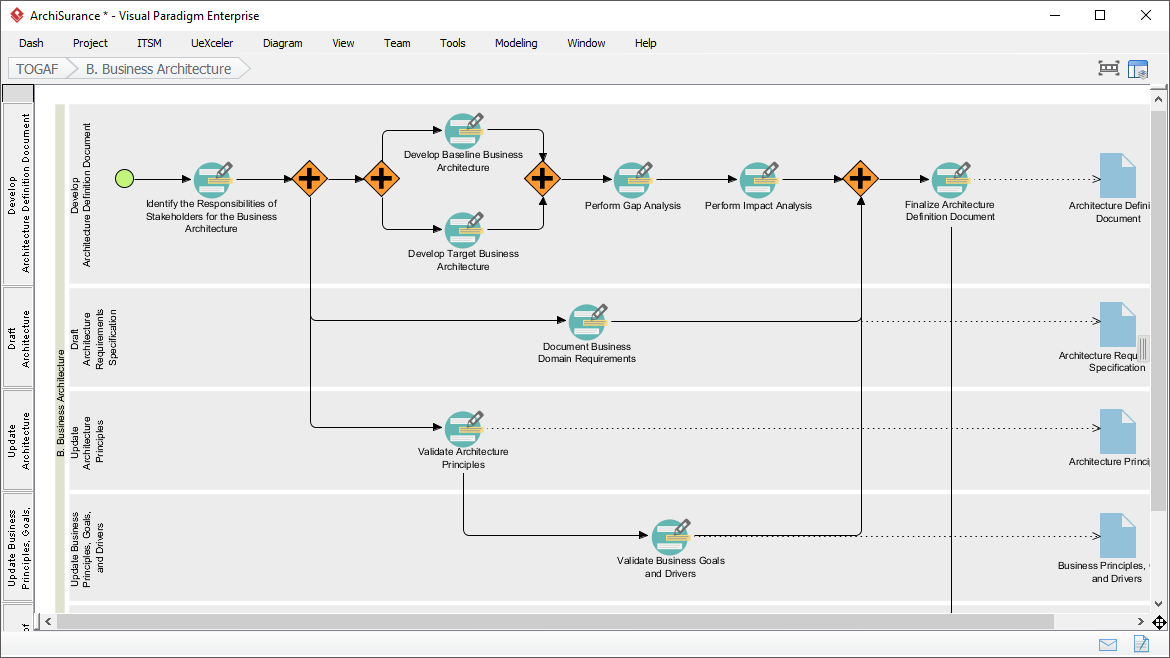
Visual Paradigm's TOGAF Guide-through Process is an Enterprise Architecture tool that helps your team overcome the teething problems in enterprise architecture.
Tooling
If you Google around for Enterprise Architecture tooling you will probably uncovered two alternatives: Established EA tools with very high price tag, yet they only provide a tree-like structure of repository that contains a set of templates you to edit yourselves. The second alternative would be some drawing tools, such as Visio that requires excessive management and juggling of information between multiple applications.
The benefits of the Guide-through Process Approach
- Structure TOGAF ADM into phases, activities and steps, and embedded with instructions, samples and input references
- Progress Indicator that shows you where you are and the status of completion for phases, activities and steps
- Perform analysis, diagramming and work incrementally and generate deliverable and report automatically
- Automatically transcribe data from one step to another for further actions or perform different forms of analysis
- Carry forward of deliverable as input reference from one step to another
- Assign activity or deliverables as task for different members with time schedule and role to the task manager automatically
- Seamlessly integrate EA, Project Management process with Agile software development process and toolset
Visual Paradigm Guide-through Process at a Glance
"PMBOK" is a trademark of the Project Management Institute, Inc. which is registered in the United States and other nations.
"TOGAF" is a trademark of The Open Group, which is registered in the United States and other countries.

